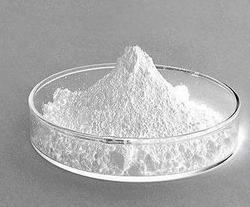
Discovered from animal tissues
Hyaluronan (also referred to as hyaluronic acid or hyaluronate or HA), is a natural and linear glycosaminoglycan, and is ubiquitous in all the tissues and fluids of animals, with the highest concentrations in soft connective tissues.
Fig. 1 HA powder

In 1934, Karl Meyer and his assistant John Palmer first announced the discovery of HA. They purified HA from bovine vitreous and showed that it contained a hexuronic acid and a hexosamine. They proposed “for convenience, the name hyaluronic acid, from hyaloid (vitreous) + uronic acid.” Up to the mid-1940s, HA had been isolated successfully from other sources – synovial fluid, skin, umbilical cord, cock’s comb, etc.
Fig. 2 Karl Meyer

In the 1980s, Dr. Endre Balazs and his coworkers developed a procedure to isolate, purify, and identify hyaluronic acid from rooster combs and human umbilical cords. Since then, HA has been produced at an industrial scale from rooster combs and human umbilical cords.
Discovered from bacteria
It is known that the capsules of some bacteria contain HA, therefore, HA can also be isolated from certain strains of bacteria, such as streptococci, which was first reported in 1937 by Kendall et al. They cultured Group A streptococci and then the mucoid polysaccharide was precipitated with ethanol. This polysaccharide which was composed of N-acetyl glucosamine and glucuronic acid units was identical with that occurring in bovine vitreous humor and human umbilical cord. The bacterial production of HA involving a Streptococcus zooepidernicus strain was first described in 1989, giving rise to the first commercialization of HA produced by fermentation.
Fig. 3 Hcapsule of certain strains of bacteriaA

The absence of uronic acid in eggshell membrane has been reported by several studies. In 2005, a US patent (US 6946551 B2) described a method for the extraction, isolation, and purification of HA from eggshell membrane. The total HA content of eggshell membrane was between 0.5%~10% by uronic acid analysis.
Nowadays, Streptococci, Lancefield Groups A and C, a kind of Gram-positive bacteria, is the specified bacteria by European Pharmocopoeia, Japanese Pharmocopoeia, and Korean Pharmocopoeia to produce HA. Besides streptococci, HA can also be fermented from bacillus subtilis, but it needs to be genetically modified since bacillus subtilis does not naturally have the genes necessary to manufacture HA.
By the end of the 20th century, bacterial fermentation had become the leading production technique for sodium hyaluronate, and it has led to great changes in the sodium hyaluronate industry. The industry is now able to produce a higher quality HA product on an industrial scale necessary to support the continued expansion of HA applications into new areas of science. The techniques have also lowered the cost of HA production to a point that has allowed many applications to go mainstream that might have proved too costly for markets previously.
Commercial HA is commonly presented as the form of sodium salt
During the manufacture of HA, sodium salts (such as sodium chloride or sodium hydroxide) are often used to increase ionic strength or to adjust pH value, therefore, most HA products are presented in the form of sodium salt, named sodium hyaluronate.
